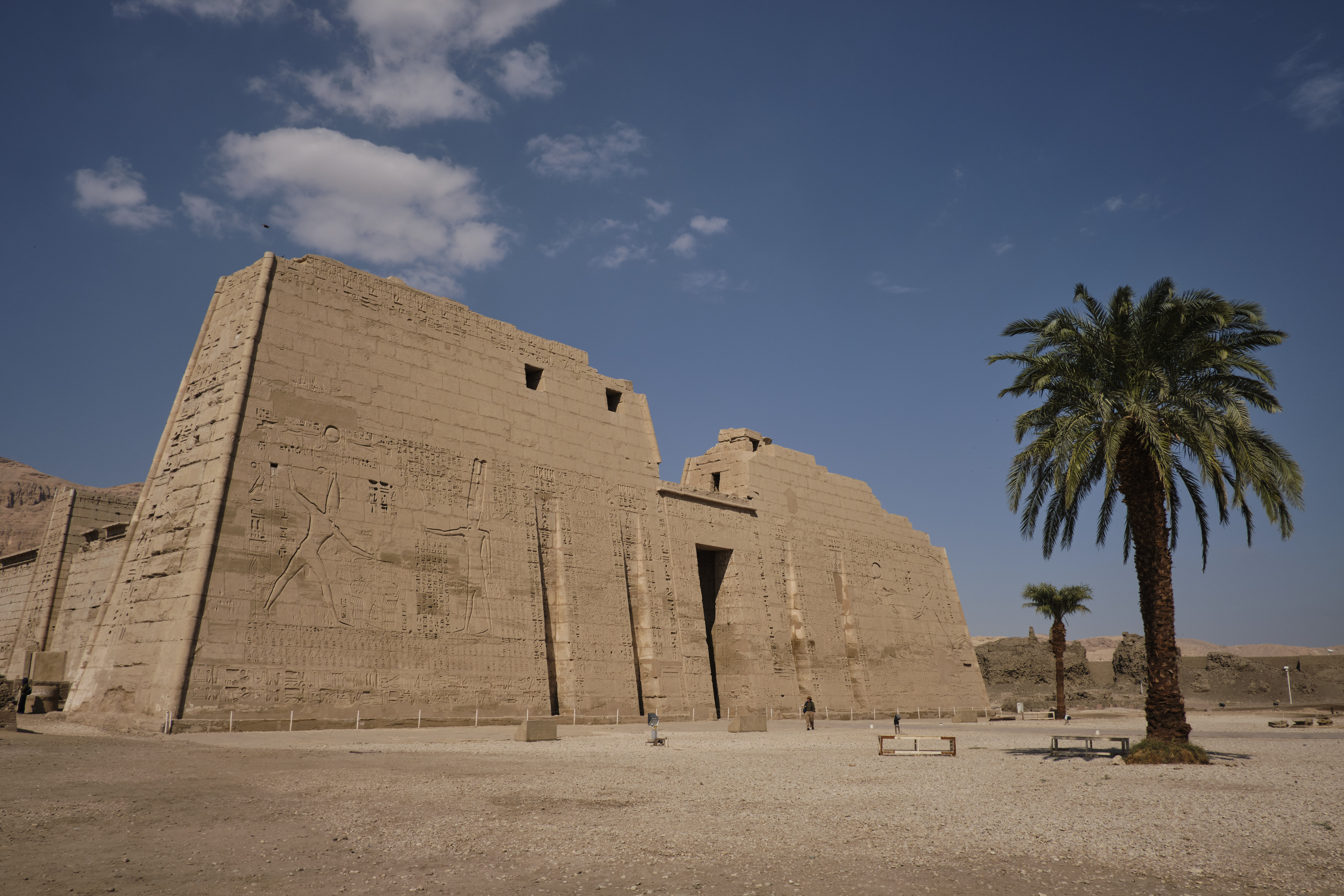Od Memfis do Teb

Pylon świątyni grobowej Ramzesa III
Ramzes III, ostatni wielki władca starożytnego Egiptu, zasłynął przede wszystkim odparciem ataków na Deltę. Podobnie jak jego poprzednich dynastii Nowego Państwa, za miejsce wiecznego spoczynku wybrał on Dolinę Królów, zaś miejscem jego kultu stał się obszar określany obecnie jako Medinet Habu, gdzie wzniesiona została dla niego nietypowa świątynia grobowa. Choć sama świątynia zarówno pod względem rozplanowania, jak i dekoracji nawiązuje do tradycyjnych rozwiązań, to jednak kształt murów otaczających cały kompleks oraz główna brama wejściowa wyraźnie wskazują na militarny charakter panowania Ramzesa III. Przypominają one bowiem mury i bramy twierdz egipskich, które jednak wykonywano z cegieł mułowych, jednak w tym przypadku miała to być „twierdza wieczności”, co wymagało użycia zdecydowanie twardszego materiału, jakim był kamień. Sceny bitewne ukazane zostały w wielu miejscach świątyni, jak m.in. na głównym pylonie, na którym widać ponadnaturalnej wielkości przedstawienia faraona, stojącego przed bogiem Amonem-Ra, trzymającego jedną ręką swoich klęczących wrogów za włosy, druga natomiast uniesioną wysoko do góry trzyma maczugę gotową do uderzenia. Rzędy pokonanych jeńców ukazano również na ścianach dalszych pomieszczeń, jak np. słynna scena liczenia pokonanych wrogów poprzez zliczanie dłoni odciętych poległym żołnierzom.
Pylon of the Mortuary Temple of Ramesses III
Ramesses III, the last great ruler of ancient Egypt, became famous primarily for repelling attacks on Delta. Like his previous New Kingdom dynasties, he chose the Valley of the Kings as his final resting place, and his place of worship was the area now known as Medinet Habu, where an unusual mortuary temple was erected for him. Although the temple itself, both in terms of its layout and decoration, refers to traditional solutions, the shape of the walls surrounding the entire complex and the main entrance gate clearly indicate the military character of the reign of Ramesses III. They resemble the walls and gates of Egyptian fortresses, which, however, were made of mud bricks, but in this case it was supposed to be a “fortress of eternity”, which required the use of a much harder material, which was stone. Battle scenes were shown in many places of the temple, including the main pylon, where the supernatural size of the Pharaoh is presented while standing before the god Amon-Ra, holding his kneeling enemies by the hair with one hand and holding a club ready to strike in his other, risen hand. Rows of defeated prisoners were also shown on the walls of other rooms, such as the famous scene of counting defeated enemies by counting the hands cut off from fallen soldiers.